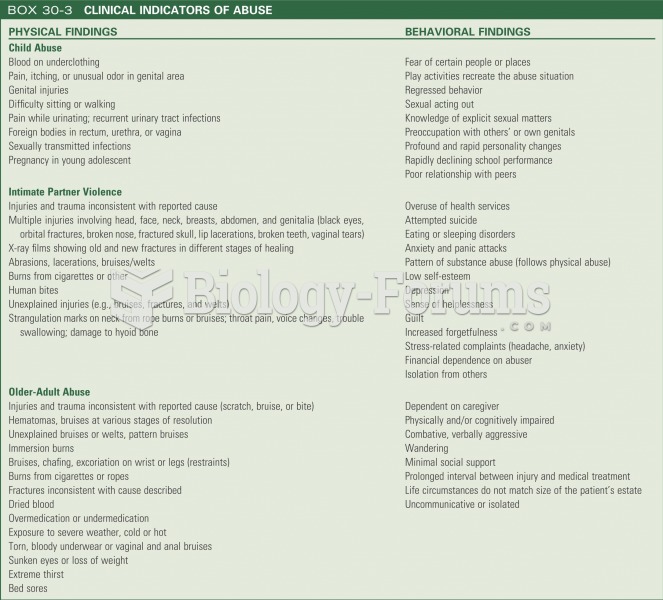|
|
|
Signs and symptoms that may signify an eye tumor include general blurred vision, bulging eye(s), double vision, a sensation of a foreign body in the eye(s), iris defects, limited ability to move the eyelid(s), limited ability to move the eye(s), pain or discomfort in or around the eyes or eyelids, red or pink eyes, white or cloud spots on the eye(s), colored spots on the eyelid(s), swelling around the eyes, swollen eyelid(s), and general vision loss.
You should not take more than 1,000 mg of vitamin E per day. Doses above this amount increase the risk of bleeding problems that can lead to a stroke.
Critical care patients are twice as likely to receive the wrong medication. Of these errors, 20% are life-threatening, and 42% require additional life-sustaining treatments.
In women, pharmacodynamic differences include increased sensitivity to (and increased effectiveness of) beta-blockers, opioids, selective serotonin reuptake inhibitors, and typical antipsychotics.
Looking at the sun may not only cause headache and distort your vision temporarily, but it can also cause permanent eye damage. Any exposure to sunlight adds to the cumulative effects of ultraviolet (UV) radiation on your eyes. UV exposure has been linked to eye disorders such as macular degeneration, solar retinitis, and corneal dystrophies.
 Exponential growth in the Canadian migratory population of the whooping crane after 70 years of cons
Exponential growth in the Canadian migratory population of the whooping crane after 70 years of cons
 Details of plant population biology from repeat photography: (a) saguaro cactus in MacDougal Crater,
Details of plant population biology from repeat photography: (a) saguaro cactus in MacDougal Crater,
 Hemodialysis. The process of hemodialysis replaces the kidney function of blood filtration by forcin
Hemodialysis. The process of hemodialysis replaces the kidney function of blood filtration by forcin




